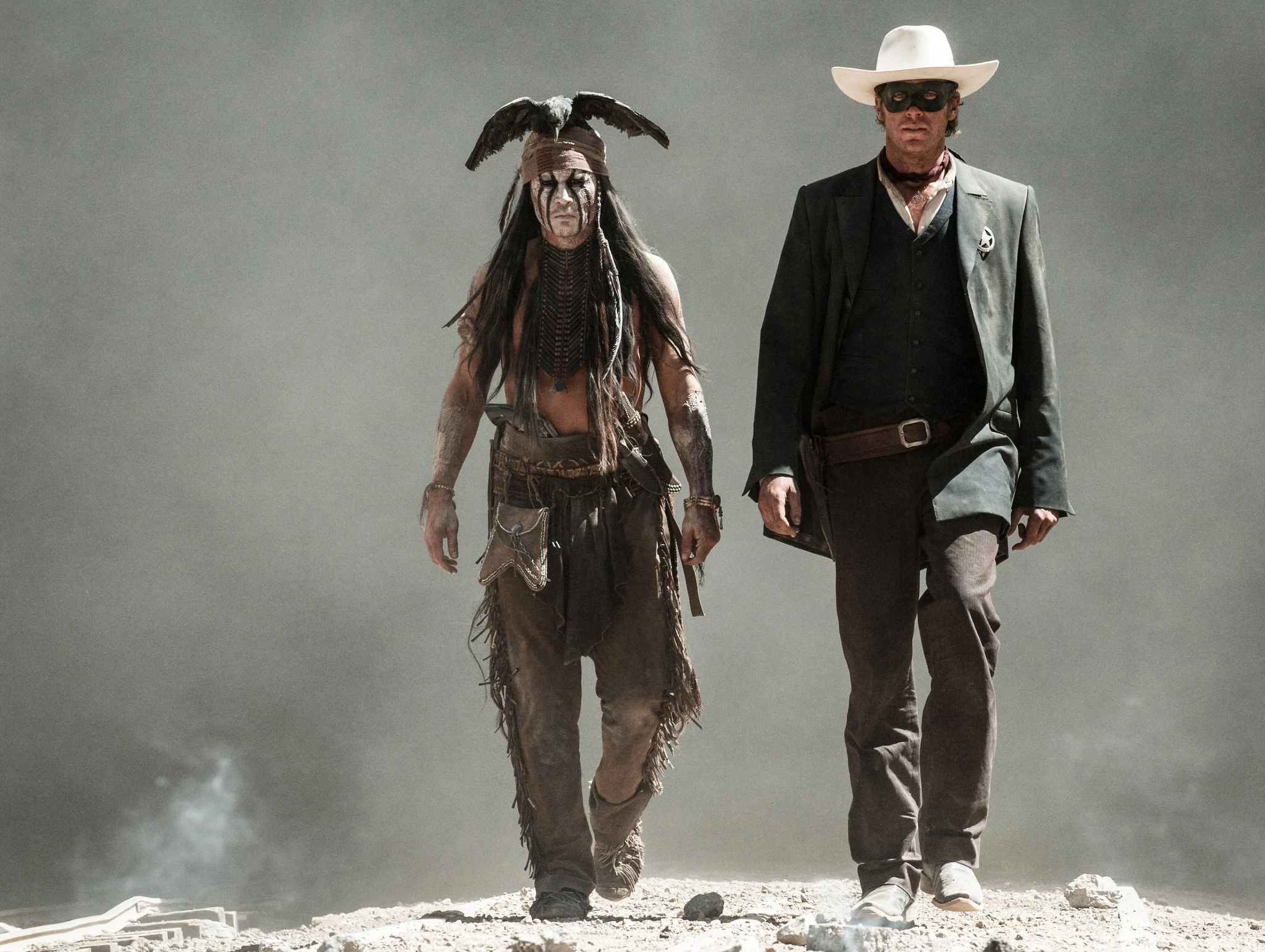
Directed by: Gore Verbinski
Starring: Johnny Depp, Armie Hammer, Helena Bonham Carter, Tom Wilkinson, Barry Pepper
The Lone Ranger proudly displays "Disney" on its posters, but is the subject matter really for children? There's action to be sure, but also a character having his heart ripped from his chest, scorpions attacking men buried up to their necks, a horse eating those scorpions, wild rabbits eating scorpions, two men who have an amputee fetish, a horse excreting on the ground (and an unconscious man dragged over the excrement), and villains who need to be directed to the nearest shower at once. Sounds like a blast, right?
Consider that the bulk of the story involves the genocide of Native American tribes and the completion of the first transcontinental railroad, it wouldn't be a surprise if many children (and adults) are busy checking their watches to figure out how much longer they have to endure this. The Lone Ranger is like a marathon: It seems like it might be fun or productive at first, but by the end you just want to finish so all of your time and energy put into it aren't in vain.
The film opens in San Francisco, 1933, and there is a shot of the Golden Gate bridge still under construction. Someone behind me gasped, as if he was stunned to discover that the Golden Gate Bridge wasn't already present when San Francisco was settled. A young boy attends a freakish circus which should cause him to run away in horror, but he enters an Old West museum and discovers that the "statue" of the Native American in one of the displays is a live person. He is a very elderly Tonto, who tells the boy the story of The Lone Ranger, which by 1933 has become a part of American folklore. Why is the flashback storytelling device used? Beats me. It doesn't add anything.
Anyhow, Tonto's story starts with John Reid, a big-city attorney returning home to Texas to visit his brother, Dan, who is awaiting the arrival of notorious outlaw Butch Cavendish (William Fichtner) on the same train. A trend in recent movies is that any outlaw, murderer, thief, drug dealer, etc. being transported between prisons will be rescued causing untold amounts of collateral damage. Also, on the train is Tonto (Depp), who is chained to Cavendish although he has no connection to Cavendish's crimes. Tonto wears a dead bird as a headdress and tries in vain to feed it with birdseed.
Reid stumbles onto the plot to rescue Cavendish and finds himself chained to Tonto. The two escape from a massive train crash, but nothing is mentioned of the crash afterwards. It is quickly forgotten as the Reids and other Texas Rangers search the desert for Cavendish. A colossal miscalculation is making John Reid into such a virtuous buffoon. He is such a doofus that, forget about being the future Lone Ranger, how did he ever pass the bar exam? It's not an easy transition to accept him as the hero. Tonto, as played by Depp, sounds like a stereotypical wooden Indian from 1930's movies. He has many speeches about Comanche beliefs, but drops "the" from most of his sentences. "You are spirit-walker, kemosabe," he tells Reid and kemosabe isn't actually a complimentary term. Another strange thing about Tonto is how his facepaint never comes off, even after being underwater or sweating profusely under the desert sun. Does he carry extra facepaint somewhere?
There is also a plot which the Lone Ranger must foil involving the railroad construction and who started what war with whom, but I won't belabor that with an explanation. The Lone Ranger of course wears his mask, but also seems to be alternately clean-shaven and stubbly in the same scene!! The relationship between Tonto and the ranger is rather antagonistic. In one scene, the supposed paragon of good The Lone Ranger whacks Tonto on the back of the head with a shovel to prevent him from shooting Cavendish, leaving him in the hot sun to possibly perish. Tonto returns to save the day and I have to credit him for being very forgiving about the whole shovel-to-the-head thing.
The film runs nearly two and a half hours. It's a shame to see Disney throwing such good money after bad with this production, which in the end is an ugly, ungainly film with a plot and characters that are hard to care about. This is a movie chock full of "Fallacy Of The Talking Killer" scenes, in which one character has another at gunpoint. All he has to do is pull the trigger, but instead delivers a one-liner or speech promising doom for his target. This allows the person about to be shot to be rescued or think his way out of trouble. I counted at least six of these scenes, which outnumbers the number of scorpions eaten by animals by one if memory serves.
Of course, the William Tell Overture is played during the finale. The tune, of course, was made popular with the 1950's Lone Ranger TV show. I see its use as kind of lazy. This way, the film doesn't need to create a new score during these scenes. The William Tell Overture represents a sense of adventure and good cheer that the film sorely lacks.
No comments:
Post a Comment